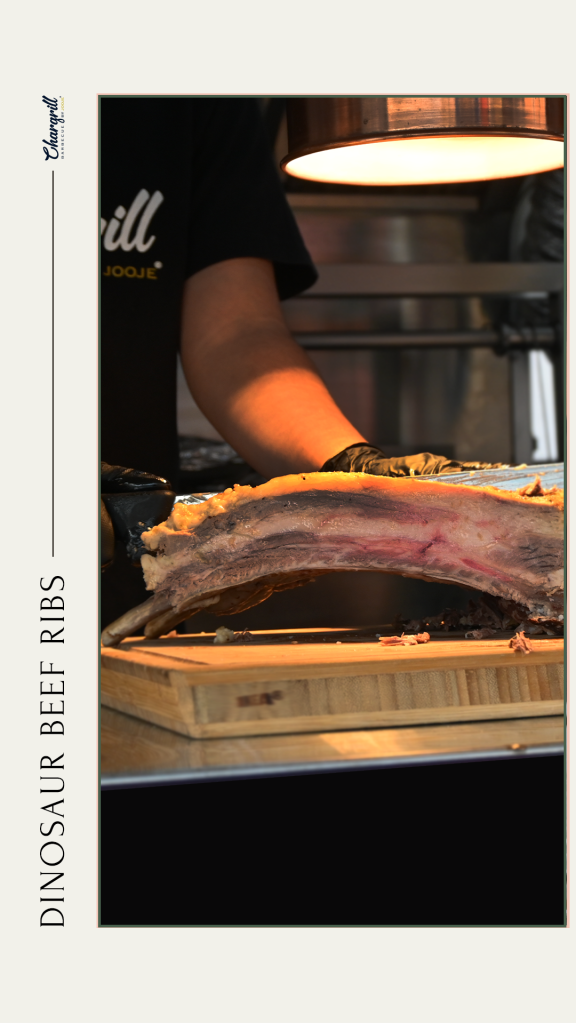Smoking Techniques for brisket is an art form that requires patience, precision, and the right plan to achieve that perfect, tender, and juicy result. This guide will walk you through the top smoking techniques to ensure your brisket is a crowd-pleaser every time. We will cover everything from selecting the right cut of meat to mastering the Texas Crutch method.
Smoking a meat involves a slow and careful cooking process that imparts deep, complex flavors and tenderizes the tough cut of meat. The brisket, often seasoned with a simple dry rub of salt and pepper or a more elaborate spice blend, is placed in a smoker preheated to a consistent temperature between 225°F and 250°F. Wood chips, such as oak, hickory, or mesquite, are added to the smoker to produce smoke that infuses the meat with a distinctive, smoky taste.
Smoking Process
After reaching an internal temperature of around 203°F and achieving the desired tenderness, the brisket is allowed to rest before slicing to redistribute juices and further enhance its flavor and texture.
| Aspect | Details |
|---|---|
| Smoking Duration | 12-20 hours, depending on size and temperature |
| Ideal Temperature | 225°F to 250°F |
| Wood Types | Post oak, pecan, hickory, mesquite |
| Seasoning | Dry rub (salt and pepper) or marinades |
| Wrapping Technique | Texas Crutch (wrapping in foil or butcher paper) |
| Internal Temperature for Doneness | Around 203°F |
| Resting Time | 1 to 4 hours |
| Bark Formation | Use rub with salt, pepper, sugar; smoke unwrapped until bark forms |
| Moisture Management | Use a water pan to maintain moisture and stabilize temperature |
| Sections of Brisket | Point (fattier, used for burnt ends) and Flat (leaner, ideal for slicing) |
| Flavor Profile | Deep, complex smoky flavor, can vary with wood type |
| Over-smoking Prevention | Use well-seasoned wood, ensure proper ventilation, limit smoking phase |
| Storage of Leftovers | Wrap tightly in foil or butcher paper; refrigerate or freeze |
| Key Steps | Apply rub, maintain consistent smoker temperature, monitor internal temp, allow resting time |
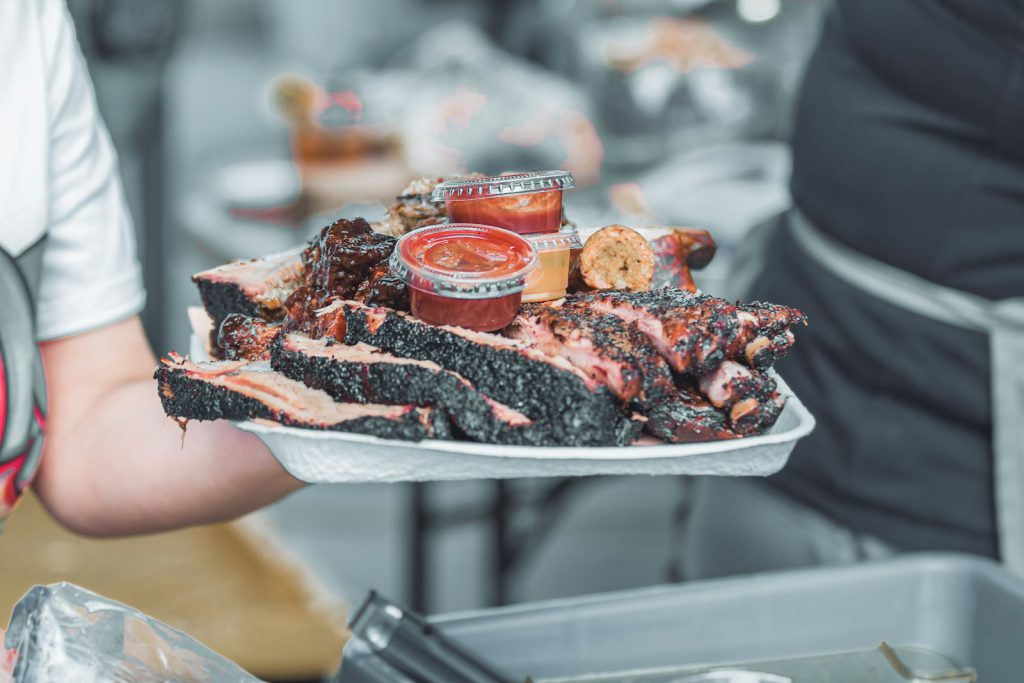
The Importance of Low and Slow Cooking
The essence of smoking brisket lies in the low and slow cooking method. Maintaining a consistent temperature between 225°F and 250°F allows the collagen in the meat to break down, resulting in a tender texture.
This low and slow cooking method can last anywhere from 12 to 20 hours, depending on the size of the brisket. Throughout the smoking process, the meat is carefully monitored for internal temperature and texture, often employing techniques like the Texas Crutch—wrapping the meat in foil or butcher paper—to overcome temperature stalls and ensure moisture retention.
- Ideal Cooking Temperatures: Maintaining the right heat
- Cooking Duration: The importance of patience
- Temperature Monitoring: Using thermometers effectively
- Heat Distribution: Managing smoker hot spots
- Wood Choices: How wood type influences flavor
Table: Wood Types and Flavors
| Wood Type | Flavor Profile | Recommended For |
|---|---|---|
| Hickory | Strong, bacon-like | Beef, pork |
| Mesquite | Intense, earthy | Beef |
| Oak | Balanced, versatile | All meats |
| Pecan | Sweet, nutty | Beef, poultry |
Tips:
- Keep the smoker temperature steady.
- Use a meat thermometer to monitor internal temperatures.
- Choose wood types that complement the beef.
Choosing the Right Brisket to smoke
Selecting the right brisket is the first step toward a delicious smoked masterpiece. High-quality meat, such as Prime or Choice grades, is essential for the best results. Lower grades may require additional techniques like marinating or injecting to tenderize the meat.
- Grades of Beef: Prime, Choice, Select
- Marbling Importance: How fat content affects tenderness
- Meat Preparation: Trimming and seasoning
- Marinating: Benefits and methods
- Injecting Brisket: Tools and techniques
Table: Beef Grades and Characteristics
| Grade | Marbling | Tenderness | Flavor |
|---|---|---|---|
| Prime | Abundant | Very tender | Rich |
| Choice | Moderate | Tender | Flavorful |
| Select | Sparse | Less tender | Lean |
Tips:
- Always select a brisket with good marbling.
- Trim excess fat but leave a thin layer for moisture.
- Use a marinade or injection to enhance flavor.
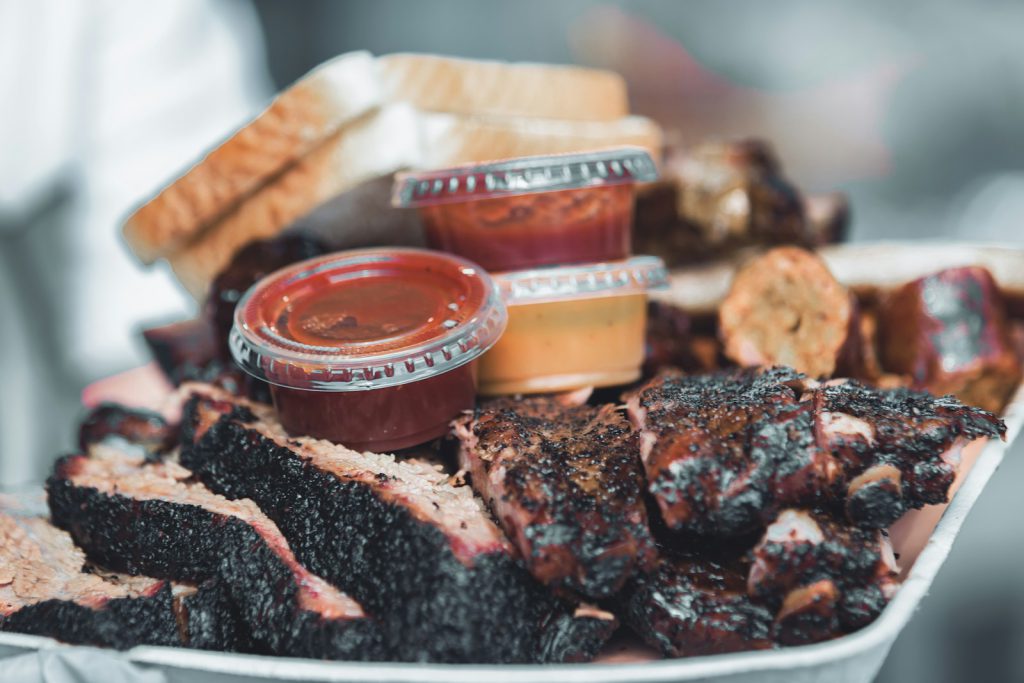
The Texas Crutch Method
The Texas Crutch is a technique used to speed up the cooking process and retain moisture by wrapping the brisket in foil or butcher paper during the cook.
Subtopics:
- What is the Texas Crutch?
- Aluminum Foil vs. Butcher Paper: Pros and cons
- When to Wrap: Timing and signs
- Wrapping Technique: How to wrap effectively
- Post-Wrap Cooking: Returning to the smoker
Table: Wrapping Materials Comparison
| Material | Benefits | Drawbacks |
|---|---|---|
| Aluminum Foil | Faster cook, retains moisture | Soggy bark |
| Butcher Paper | Breathable, better bark | Slightly longer cook time |
Tips:
- Wrap at the stall, typically around 160°F.
- Use butcher paper for a better bark.
- Ensure a tight wrap to prevent steaming.
4. Managing the Stall
The stall is a phase where the brisket’s internal temperature plateaus for several hours. Understanding and managing the stall is crucial for successful smoking.
Subtopics:
- What is the Stall?
- Causes of the Stall: Evaporative cooling effect
- Dealing with the Stall: Patience vs. Texas Crutch
- Monitoring Progress: Keeping track of internal temperatures
- Adjusting Smoker Settings: When and how to tweak heat
Table: Typical Stall Temperatures
| Temperature Range | Time Duration |
|---|---|
| 150°F – 170°F | 2 – 6 hours |
Tips:
- Don’t panic during the stall.
- Use the Texas Crutch to push through the stall.
- Maintain steady smoker temperatures.
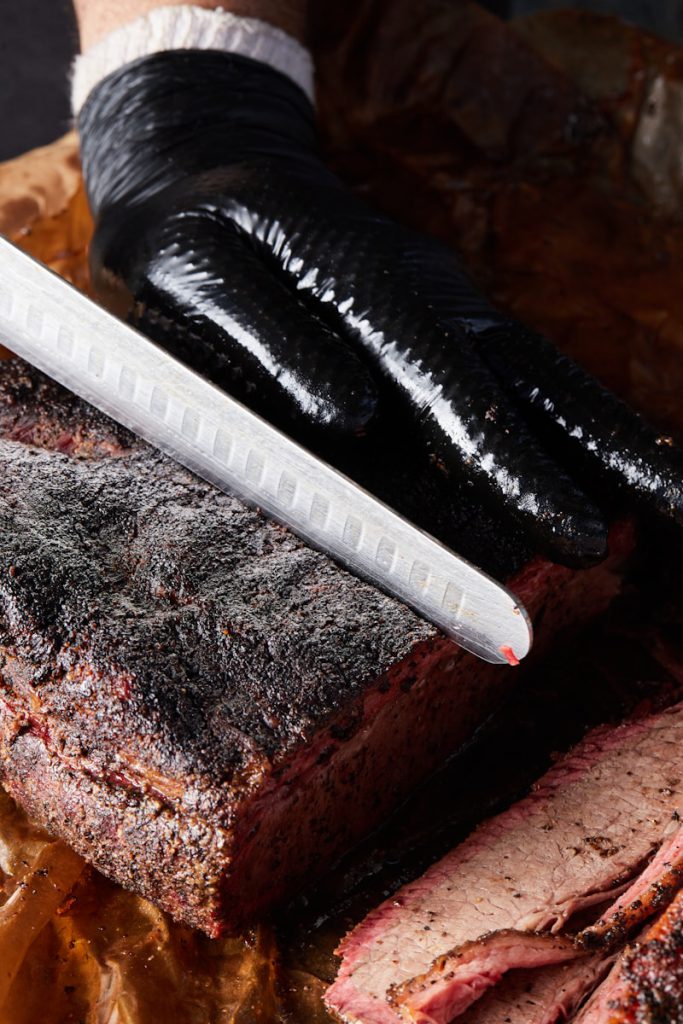
5. Developing a Flavorful Bark
The bark is the dark, flavorful crust that forms on the outside of the brisket during smoking. Achieving a good bark is a balance of seasoning, heat, and smoke.
Subtopics:
- Importance of Bark: Flavor and texture benefits
- Seasoning Rubs: Ingredients and application
- Smoking Techniques: How to develop bark
- Wrapping Considerations: Impact on bark
- Finishing Touches: Post-wrap bark development
Table: Rub Ingredients for Bark
| Ingredient | Flavor Profile | Contribution |
|---|---|---|
| Salt | Savory | Enhances flavor |
| Pepper | Spicy | Adds heat |
| Paprika | Sweet, smoky | Color and depth |
Tips:
- Apply rub generously.
- Avoid wrapping too early.
- Finish uncovered for a crispier bark.
Resting the Brisket
Resting is a crucial step that allows the juices to redistribute throughout the meat, ensuring moist and tender slices.
- Why Resting is Important
- Resting Times: Optimal durations
- Wrapping During Rest: Foil vs. paper
- Temperature Management: Keeping the meat warm
- Slicing Techniques: How to cut post-rest
Table: Resting Time Recommendations
| Weight of Brisket | Resting Time |
|---|---|
| Under 10 lbs | 1 – 2 hours |
| Over 10 lbs | 2 – 4 hours |
Tips:
- Rest brisket for at least one hour.
- Keep wrapped in a cooler or oven.
- Slice against the grain.
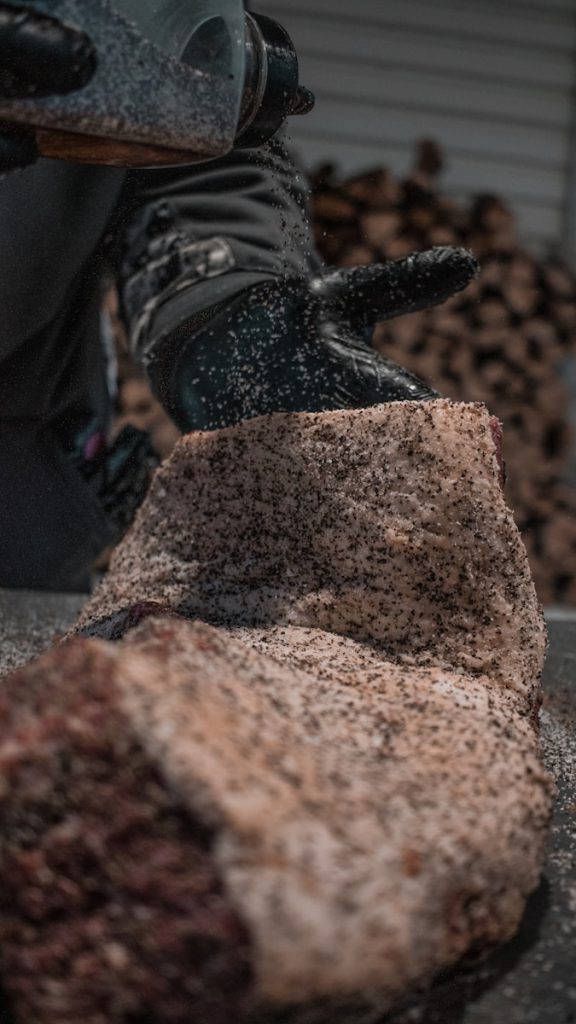
Slicing and Serving
Proper slicing techniques enhance the eating experience by ensuring each bite is tender and flavorful.
- Slicing Against the Grain: Importance and method
- Knife Choices: Tools for the job
- Serving Presentation: Enhancing visual appeal
- Portion Sizes: Appropriate serving amounts
- Garnishes and Sides: Complementary dishes
Table: Slicing Techniques
| Technique | Benefit |
|---|---|
| Against the Grain | Increased tenderness |
| Thin Slices | More flavorful bites |
| Uniform Cuts | Even cooking |
Tips:
- Use a sharp knife.
- Slice thinly for tenderness.
- Present slices attractively.
Troubleshooting Common Issues
Even experienced pitmasters encounter issues when smoking brisket. Knowing how to troubleshoot can save your brisket.
- Dry Brisket: Causes and fixes
- Tough Brisket: How to tenderize
- Bark Problems: Soft or burnt bark solutions
- Temperature Fluctuations: Managing heat
- Smoke Management: Avoiding over or under-smoking
Table: Common Brisket Problems and Solutions
| Problem | Cause | Solution |
|---|---|---|
| Dry Brisket | Overcooking | Shorten cook time, wrap |
| Tough Brisket | Undercooking | Extend cooking time |
| Soft Bark | Early wrapping | Finish unwrapped |
Tips:
- Monitor temperature closely.
- Adjust smoker settings as needed.
- Use moisture techniques like spritzing.
Advanced Smoking Techniques
For those looking to take their brisket smoking to the next level, advanced techniques can add new layers of flavor and texture.
- Double Smoking: Enhancing smoke flavor
- Injecting Marinades: Adding moisture and flavor
- Reverse Searing: Final crisping method
- Wood Blending: Combining different woods
- Experimental Rubs: Creating unique flavor profiles
Table: Advanced Techniques and Benefits
| Technique | Benefit |
|---|---|
| Double Smoking | Intensified smoke flavor |
| Reverse Searing | Crispier exterior |
| Wood Blending | Complex flavor |
Tips:
- Experiment with different wood combinations.
- Try injecting for added flavor.
- Use reverse searing for a crispy finish.
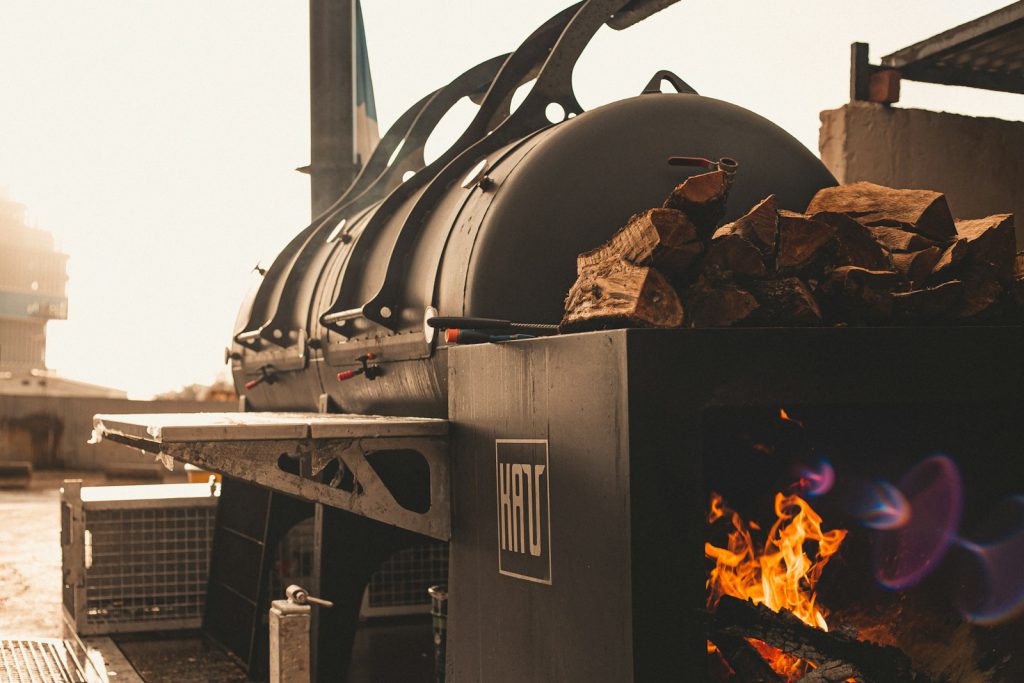
Central Texas Barbecue
Central Texas-style barbecue is synonymous with simplicity and tradition. This method focuses on the quality of the meat, typically seasoned with just salt and black pepper, and cooked “low and slow” over indirect heat using woods like post oak, pecan, or hickory.
- The Role of Indirect Heat: Cooking the meat indirectly helps in evenly distributing heat, resulting in tender and juicy brisket.
- Seasoning Simplicity: The minimalistic seasoning approach allows the natural flavors of the beef to shine.
- Wood Selection: The type of wood used significantly influences the flavor profile. Post oak is commonly preferred.
- Cooking Duration: Brisket is often smoked for up to 20 hours at temperatures between 225-275°F.
- No Sauce Tradition: Sauces are typically served on the side to complement the meat’s natural flavors.
Table: Wood Types and Flavor Profiles
| Wood Type | Flavor Profile |
|---|---|
| Post Oak | Mild, Slightly Sweet |
| Pecan | Rich, Nutty |
| Hickory | Strong, Smoky |
- Focus on beef brisket.
- Minimal seasoning with salt and pepper.
- Slow smoking over indirect heat.
East Texas Barbecue
East Texas barbecue is known for its “fall-off-the-bone” tenderness and the use of sweet, tomato-based sauces. This region’s barbecue style often includes a variety of meats, with a significant emphasis on pork.
- Slow and Low Cooking: The meat is cooked at low temperatures for extended periods, often using hickory wood.
- Sauce Application: Tomato-based sauces are a staple, providing a sweet and tangy flavor.
- Pork Dominance: Pulled pork and pork ribs are particularly popular in this region.
- Cajun Influences: East Texas barbecue incorporates Cajun flavors, adding a unique twist.
- Sandwich Tradition: The meat is often served in sandwiches, enhancing the dining experience with a variety of sides.
Table: Popular Meats and Their Preparation
| Meat | Preparation Method |
|---|---|
| Pulled Pork | Slow-cooked, tomato sauce |
| Pork Ribs | Hickory smoked, sweet sauce |
| Boudin | Seasoned sausage with rice |
Bullet Points:
- Low and slow cooking method.
- Tomato-based sauces.
- Emphasis on pork dishes.
West Texas Barbecue
West Texas, also known as “cowboy style,” utilizes direct heat and mesquite wood, giving the meat a distinctive, robust flavor. This style is more akin to grilling than traditional smoking.
- Direct Heat Cooking: Meat is cooked directly over the flame, creating a charred exterior.
- Mesquite Wood: This wood imparts a strong, earthy flavor to the meat.
- Beef Focus: Beef cuts like shoulder clod and ribs are preferred.
- Sauce Variety: Thick and hearty sauces are commonly used to complement the meat.
- Speed of Cooking: Compared to other styles, West Texas barbecue cooks faster due to the direct heat method.
Table: Cooking Techniques and Their Effects
| Technique | Effect on Meat |
|---|---|
| Direct Heat | Charred exterior, juicy interior |
| Mesquite Wood | Strong, earthy flavor |
| Fast Cooking | Crisp texture, tender inside |
Bullet Points:
- Direct heat cooking method.
- Use of mesquite wood.
- Emphasis on beef.
South Texas Barbecue
South Texas barbecue is heavily influenced by Mexican cuisine, featuring a variety of meats marinated in flavorful spices and citrus juices. This style is known for its rich, molasses-like sauces.
- Mexican Influence: The use of spices and citrus in marinades.
- Variety of Meats: Beef, pork, and chicken are commonly used.
- Barbacoa Tradition: Cooking meat in an underground pit.
- Thick Sauces: Molasses-based sauces keep the meat moist and flavorful.
- Tex-Mex Fusion: Combining traditional barbecue with Tex-Mex flavors.
Table: Marinades and Sauces
| Marinade Ingredient | Flavor Profile |
|---|---|
| Citrus Juices | Bright, Tangy |
| Molasses | Rich, Sweet |
| Spices | Bold, Spicy |
Eastern vs. Western Texas Style
The contrast between Eastern and Western Texas barbecue highlights the diversity within the state. Eastern Texas barbecue focuses on low and slow cooking with sweet sauces, while Western Texas opts for direct heat and robust, earthy flavors.
- Cooking Methods: Indirect heat versus direct heat.
- Sauce Differences: Sweet, tomato-based versus thick, hearty sauces.
- Meat Choices: Pork-centric in the East, beef-centric in the West.
- Wood Types: Hickory in the East, mesquite in the West.
- Flavor Profiles: Sweet and tangy versus bold and smoky.
Table: Eastern vs. Western Texas Barbecue
| Aspect | Eastern Texas | Western Texas |
|---|---|---|
| Cooking Method | Indirect heat | Direct heat |
| Wood Type | Hickory | Mesquite |
| Sauce | Sweet, tomato-based | Thick, hearty |
| Meat Focus | Pork | Beef |
| Flavor Profile | Sweet, tangy | Bold, smoky |
Bullet Points:
- Indirect vs. direct heat.
- Sweet vs. hearty sauces.
- Pork vs. beef focus.
How long should you smoke a brisket?
Smoking a brisket typically takes between 12-20 hours, depending on the size and temperature.
What wood is best for smoking brisket?
Post oak is commonly used, but pecan, hickory, and mesquite are also popular choices.
Should you use a dry rub or marinade for brisket?
Most traditional Texas styles use a dry rub of salt and pepper, but marinades can be used depending on the regional style.
What is the Texas crutch?
The Texas crutch involves wrapping the brisket in foil or butcher paper to speed up the cooking process and retain moisture.
How can you tell when a brisket is done?
A brisket is done when it reaches an internal temperature of about 203°F and is tender when probed.
What is the difference between East and West Texas barbecue?
East Texas barbecue is slow-cooked with sweet sauces, while West Texas barbecue uses direct heat and mesquite wood for a robust flavor.
Can you use different woods for smoking brisket?
Yes, different woods like oak, pecan, hickory, and mesquite each impart unique flavors to the brisket.
What is the best temperature to smoke brisket?
The best temperature to smoke brisket is between 225°F and 250°F for low and slow cooking.
How long should I rest my brisket?
Rest your brisket for at least 1 hour, but up to 4 hours for larger cuts.
What is the Texas Crutch?
The Texas Crutch involves wrapping the brisket in foil or butcher paper during the stall to speed up cooking and retain moisture.
How do I know when my brisket is done?
Brisket is done when it reaches an internal temperature of 195-205°F and passes the tenderness test.
Should I wrap my brisket in foil or butcher paper?
Both foil and butcher paper work, but butcher paper is preferred for better bark formation.
What wood is best for smoking brisket?
The best woods for smoking brisket are those that impart a strong, complementary flavor. Hickory, oak, mesquite, and pecan are popular choices. Hickory provides a robust, smoky flavor, mesquite adds an intense, earthy taste, oak offers a balanced smoke, and pecan gives a sweet, nutty flavor.
How do I create a good bark on my brisket?
Creating a good bark involves applying a generous rub and managing the smoker’s heat and humidity. Key steps include:
- Using a rub with salt, pepper, and sugar to promote the Maillard reaction.
- Smoking unwrapped until the bark forms, typically around 150°F.
- Finishing the brisket unwrapped if it was wrapped during the cook.
Should I use a water pan in my smoker?
Using a water pan helps maintain moisture and stabilize the temperature in the smoker. It creates a humid environment that can prevent the brisket from drying out and promote an even cook.
What is the difference between the point and the flat of a brisket?
A whole brisket, or packer brisket, consists of two parts: the point and the flat. The flat is a leaner section, ideal for slicing, while the point is fattier and often used for burnt ends due to its richer flavor.
How do I avoid over-smoking my brisket?
To avoid over-smoking your brisket:
- Use well-seasoned wood to avoid acrid smoke.
- Ensure proper ventilation in your smoker.
- Limit the smoking phase to the first few hours, especially if using strong woods like mesquite.
What internal temperature should I aim for?
Aim for an internal temperature of 195-205°F. This range ensures that the collagen has broken down, resulting in a tender and juicy brisket. Check for tenderness by probing the brisket; it should feel like inserting a probe into soft butter.
How should I store leftover brisket?
Store leftover brisket by wrapping it tightly in foil or butcher paper and refrigerating it. For longer storage, freeze the brisket in an airtight container or vacuum-sealed bag. Reheat slowly in the oven to maintain moisture.


